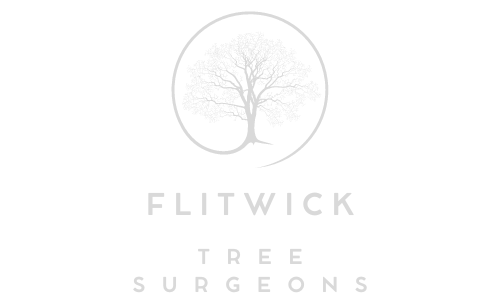Take Control of Overgrown Trees with Crown Reduction
Overgrown trees can cause a variety of issues for property owners, from obstructing light to posing safety risks. Managing these trees is essential for both the aesthetic appeal of your landscape and the health of the tree itself. At Flitwick Tree Surgeons, based in Flitwick, Bedfordshire, we specialise in crown reduction, a tree surgery technique designed to control the size of overgrown trees while maintaining their natural beauty and health. In this blog post, we’ll explore the benefits of crown reduction and how it can help you take control of overgrown trees on your property.
1. What Is Crown Reduction?
Crown reduction involves the careful removal of the upper branches of a tree to reduce its height and spread. This method differs from other techniques such as topping, as it maintains the tree’s natural shape and ensures healthy regrowth. Crown reduction is often used to manage trees that have become too large for their environment or are at risk of causing damage to nearby structures.
- Maintaining shape and balance: Unlike harsh pruning methods that can leave a tree looking unbalanced, crown reduction is designed to preserve the tree’s natural structure while reducing its size.
- Promoting healthy growth: By removing excess branches, crown reduction helps to direct the tree’s energy toward stronger, healthier growth.
2. Why Crown Reduction Is Necessary for Overgrown Trees
Overgrown trees can pose a range of problems for property owners. Crown reduction provides an effective solution to keep trees healthy, manageable, and safe.
- Preventing damage to property: Trees that grow too large can encroach on buildings, roofs, or power lines, potentially causing damage. Crown reduction reduces the risk of falling branches or damage from high winds.
- Improving light penetration: Overgrown trees can block sunlight from reaching your garden or home. Reducing the size of the crown allows more natural light to filter through, benefiting both your property and the surrounding plants.
- Enhancing air circulation: Crown reduction opens up the tree’s structure, allowing better airflow through the branches. This reduces the risk of disease by preventing moisture buildup, which can lead to fungal growth.
3. The Benefits of Crown Reduction for Tree Health
Crown reduction is not only about managing the size of a tree but also about ensuring its long-term health and vitality. Trees that are left to grow unchecked can suffer from a variety of issues, including branch breakage, overcrowding, and disease.
- Reducing stress on the tree: By carefully removing overextended branches, crown reduction alleviates the stress on the tree’s structure, preventing potential breakage during storms or high winds.
- Encouraging balanced growth: When a tree grows too large, its lower branches may become shaded, leading to weak or uneven growth. Crown reduction helps to create a more balanced canopy, ensuring even distribution of light and nutrients.
- Preventing disease and decay: Overgrown trees are more susceptible to disease, particularly if branches become overcrowded and air circulation is limited. Crown reduction improves airflow, helping to prevent conditions that contribute to fungal infections and rot.
4. Safety Considerations for Overgrown Trees
Large, overgrown trees can pose serious safety risks, particularly during storms or periods of high winds. Unmanaged trees may drop branches or, in extreme cases, topple over, causing damage to property or injury to people.
- Reducing the risk of falling branches: Crown reduction helps to remove dead or weakened branches that are at risk of falling, particularly during adverse weather conditions.
- Ensuring structural stability: Over time, trees can become top-heavy, with too much growth in the upper canopy. Crown reduction ensures that the tree remains balanced, reducing the risk of instability.
5. Crown Reduction vs. Other Tree Surgery Techniques
It’s important to understand the differences between crown reduction and other tree surgery methods to determine the best approach for managing overgrown trees.
- Crown thinning: This technique involves the selective removal of branches to reduce the density of the tree without altering its overall size. Crown thinning is ideal for trees that are healthy but need more airflow and light penetration.
- Crown lifting: Crown lifting involves removing the lower branches of a tree to raise the overall height of the canopy. This method is often used to create more space beneath the tree for pedestrians, vehicles, or garden features.
- Tree topping: Topping is a more aggressive method that involves removing large sections of the upper branches. While topping can reduce the size of a tree quickly, it often leads to weak regrowth and can damage the tree’s long-term health. Crown reduction is a more sustainable and aesthetically pleasing alternative.
Conclusion
Crown reduction is an effective way to manage overgrown trees while preserving their health and natural beauty. At Flitwick Tree Surgeons, we specialise in providing professional crown reduction services in Flitwick, Bedfordshire, to help property owners maintain safe, attractive, and healthy trees. Whether your trees are obstructing light, growing too close to buildings, or simply in need of reshaping, our team of expert arborists is here to help.
Call us on: 01525 664 396
Click here to find out more about Flitwick Tree Surgeons
Click here to complete our contact form and see how we can help with your trees needs.

